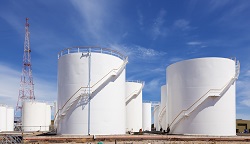Enhancing gas detection
Safety and security in many situations relies on gas detection, such as in cases of fire, gas leaks and chemical attacks. There is a demand for smaller and more reliable gas-detecting systems, relying on what is known as solid state gas sensors based on developments in nanotechnology. The EU-funded 'Nano-structured solid-state gas sensors with superior performances' (Nanos4) project developed novel solid state metal oxide (MOx) sensors that are very sensitive and efficient. The technology is based on single crystal nanobelts and stable nanobelts made up of tin oxide (SnO2), zinc oxide (ZnO) and Indium(III) oxide (In2O3). These were integrated into the technology while traditional nanowires in past models were removed, allowing for direct integration into gas-sensing devices. The use of metal oxide to produce these devices, as well as specific nanocrystals and nanopowders, has rendered the technology more efficient than ever. Other techniques involved include electron beam evaporation, hydrothermal synthesis and electromechanical synthesis. In addition, gas-surface interactions and electrical models have been studied, inching towards the state of the art in the field and leading to the development of improved commercial products. During the testing phase, gas sensor arrays were embedded into tiny micro-reactor systems and operated by micro-pumps. A portable micro-reactor sensor array was also developed and holds much promise for commercial applications. The project's partners outlined the different applications that this technology could be used for. These included general fire detection, aircraft early fire detection, cabin air monitoring, ozone detection, carbon monoxide detection, odour detection, combustion and environmental monitoring among others. With this in mind, sensors successfully underwent mechanical and environmental stability tests, with several prototypes being tested on the ground and developed. New applications have been identified and possible industrial partners have been contacted. Finally, a production business plan was prepared for three selected production processes, these being thin films, nanowires and nanopowders. Once these are realised, gas detection will be upgraded to a superior level.







